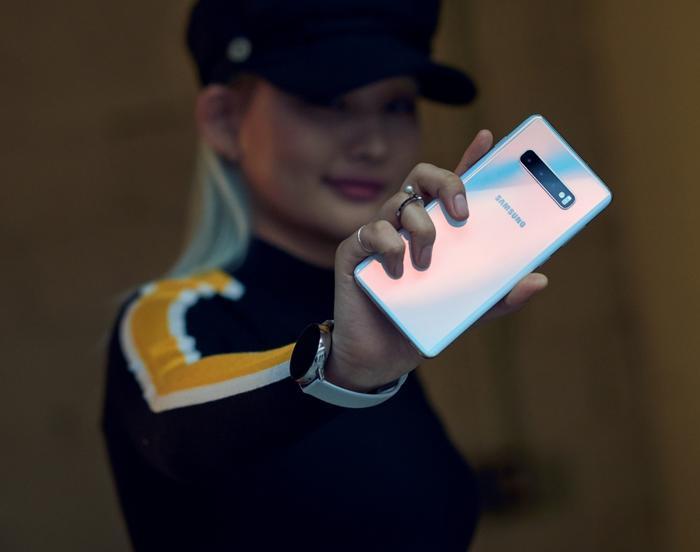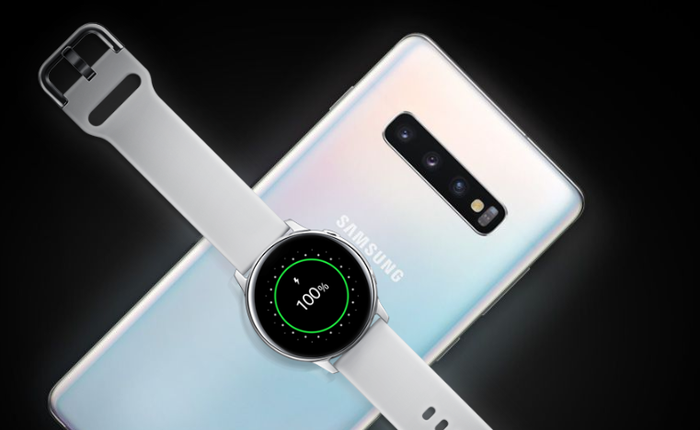
Samsung Galaxy S10+ review: Bigger is better
Pros
- Bigger battery and screen
- More RAM & storage
- One UI
Cons
- Camera can't keep up with Huawei and Google
- Iffy gesture controls
- Double hole punch notch
Bottom Line
Samsung have put more into it - and you’ll get more out of it.
-
Price
$ 1,349.00 (AUD)
The Pitch
As easy to make as the jokes the line invites are, size does matter when it comes to smartphones.
A phone too large for your hands isn’t going to be uncomfortable to use. There’s also the matter of screen space. Having a bigger screen usually means that you’ll have a better time when it comes to watching video content and browsing the web. Finally, and for better or worse, there’s the reality that most major smartphone brands tend to privilege the larger-sized version of their flagship over the smaller one.
If you want to protect your new Samsung smartphone with a quality case, click here.
The reason for this is obvious. Larger phones have more room inside them for bigger and better components. Sometimes that means a better camera or battery. Other times it means wholesale new features like 3D Face Unlock or a headphone jack.
 Credit: Samsung
Credit: Samsung When it comes to the differences between this year’s Samsung Galaxy S10 and S10+, we’re talking about the former more than the latter. The S10+ upgrades the selfie cam from single to dual-lens. It also squeezes in a larger battery, more RAM and up to 1TB of on-board storage.
Still, these improvements aside, the experience you’re getting here is incredibly close to that of the regular S10. However, that’s not say it isn’t better. Where the Galaxy S10’s foibles and shortcomings are exacerbated by its lesser specs, the Galaxy S10+ is able to lean on better hardware and emerge the superior smartphone. Samsung have put more into it - and you’ll get more out of it.
Specs - Samsung Galaxy S10+
Display size: 6.4-inches
Display type: AMOLED HDR+ display with double-holepunch notch
Processor: Exynos 9820
Operating System: Android 9.0 with One UI
Fingerprint Sensor: Yes, In-Display
RAM: 6GB / 8GB / 12GB
Storage: 128GB / 512GB / 1TB
MicroSD slot: Yes
Durability: IP68
Ports: USB Type-C, 3.5mm headphone jack
SIM: Single
Battery: 4100mAh
Connectivity: Wi-Fi (802.11ax), Bluetooth 5, Cat 18 LTE
Rear Camera: 12-megapixel (f/1.5-2.4) prime lens + 12-megapixel (f/2.4) telephoto lens + 16-megapixel (f/2.2) ultrawide lens
Front-Facing Camera: 10-megapixel (f/1.9) lens + 8-megapixel (f/2.2) lens.
Colors: Ceramic Black and Ceramic White.
Dimensions: 157.6 x 74.1 x 7.8 mm
Weight: 175 g
Price: Starts at $1349
Available from: Samsung, JB Hi-Fi, Amazon
Design - Samsung Galaxy S10+ Look, Feel & Features
Again, the Samsung Galaxy S10+ has more in common with the regular S10 than it does apart. And like the S10, the look and feel of the S10+ is best summed up as pristine.
The dynamic AMOLED HDR+ screen on this thing is as good as it gets. Of course, the premium perks that you get with the S10+ go well beyond mere looks. There’s IP68 water resistance, a headphone jack, a MicroSD fast wireless charging, USB-C fast-charging, dual Dolby speakers and more. The Bixby button endures, though it can now be remapped to the Google Assistant.
 Credit: Samsung
Credit: Samsung There’s also now a notch - or, in the case of the Galaxy S10+, a hole. My experiences with the S10 really helped me sympathize with the legions of notch-haters that have popped up since the iPhone X popularised the design choice and jumping from that to the S10+ only doubled my conviction on the matter.
Fundamentally, this feels like a trade-off that isn’t worth it and a half-step on the way to a true all-screen smartphone experience. I honestly would have preferred the shoulder-notch found on the Galaxy Fold. There’s no 3D Face Unlock here and the extra screen space rarely feels worth the irregular dimensions you're left with. It does give the S10+ a very different look to other premium Android smartphones - but that's about it.
[Related: How do in-screen fingerprint sensors work?]
Still, at least there’s the new in-display fingerprint sensor to celebrate. It’s super convenient to set up and use and I found there was no real noticeable difference between it and the sensor on the regular S10. That said, the location of the sensor does remain a weakness and it does feel just that little bit slower than the in-screen sensor in Huawei’s Mate 20 and P30 Pro.
 Credit: Samsung
Credit: Samsung Finally, there's Samsung’s take on reverse wireless charging called PowerShare. This allows you to not just charge other Qi-compatible smartphones but also recharge Samsung wearables like the new Galaxy Buds and the Galaxy Watch - which is a super neat perk you won't find in the Mate 20 or P30 Pro.
I really like this feature and I hope Samsung continue to improve upon it in future iterations because the reality of it leaves a little to be desired. It charged about 10% of my Galaxy Watch’s battery in about ten minutes - which is a little slow.
 Credit: Samsung
Credit: Samsung In addition, leaving PowerShare enabled over longer periods often also caused either my phone or Galaxy Watch to display a heat warning and stop charging - which made it hard to rely on. To reiterate, I do believe the phone-to-wearable use case for PowerShare is really compelling but the execution needs to be both improved and refined for it to really deliver on its full potential.
Next Page: Camera, Performance, Software, Battery Life and Bixby
Brand Post

Most Popular Reviews
- 1 Dell U3223QE review: A winning debut for an IPS Black monitor
- 2 HP Spectre x360 16 review: The right 2-in-1 at the wrong time
- 3 Acer K242HYL review: An affordable monitor for any occasion
- 4 GeForce Now review: You bring the games, Nvidia streams the hardware
- 5 Asus ProArt PA279CV monitor review: The go-to for content creators on a budget
Latest News Articles
- Bizarre iOS bug swaps out Spotify for Apple Music in the iPhone dock
- Fortnite returns to the iPhone (sort of) courtesy Xbox Cloud Gaming
- Want to go watch the WWDC keynote at Apple Park? Here’s how to apply
- iPad buying guide 2022
- Apple to support ‘passwordless’ iPhone logins on Android phones and PCs
Resources
Macworld
What's new, plus best mac-related tips
and tricks

Business Centre
The latest business news, reviews, features and whitepapers

Videos
Watch our video news and reviews from around the world

Guides
Comprehensive buying guides, features, and step-by-step articles

PCW Evaluation Team
Pedro Peixoto
Aruba Instant On AP11D

Set up is effortless.
Cate Bacon
Aruba Instant On AP11D

The strength of the Aruba Instant On AP11D is that the design and feature set support the modern, flexible, and mobile way of working.
Dr Prabigya Shiwakoti
Aruba Instant On AP11D

Aruba backs the AP11D up with a two-year warranty and 24/7 phone support.
Tom Pope
Dynabook Portégé X30L-G

Ultimately this laptop has achieved everything I would hope for in a laptop for work, while fitting that into a form factor and weight that is remarkable.
Tom Sellers
MSI P65

This smart laptop was enjoyable to use and great to work on – creating content was super simple.
Lolita Wang
MSI GT76

It really doesn’t get more “gaming laptop” than this.
Featured Content
- Which Lenovo Laptop Should I Buy?
- Every TV in Samsung's 2022 line-up: OLED, Neo QLED and more!
- Top 10 best Android and Apple phones for under $600
- Everything you need to know about Smart TVs
- What's the difference between an Intel Core i3, i5 and i7?
- Laser vs. inkjet printers: which is better?










